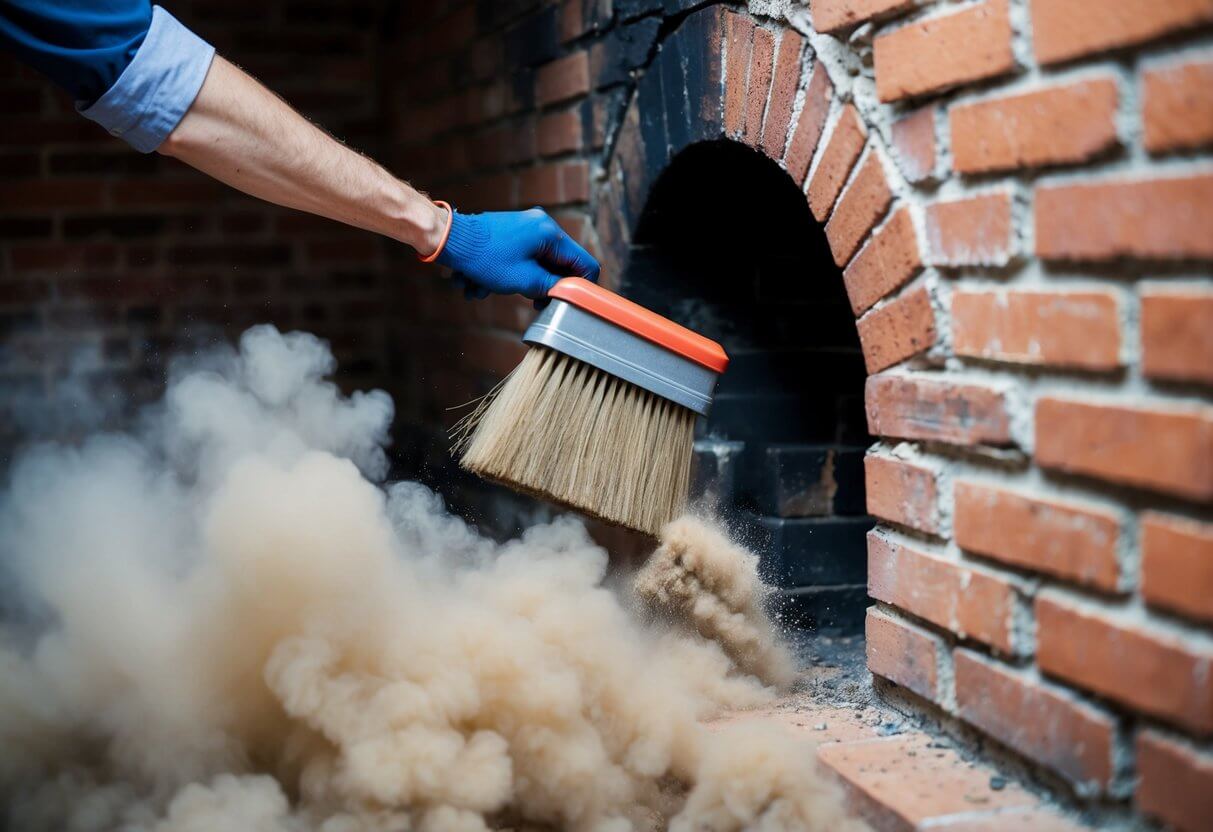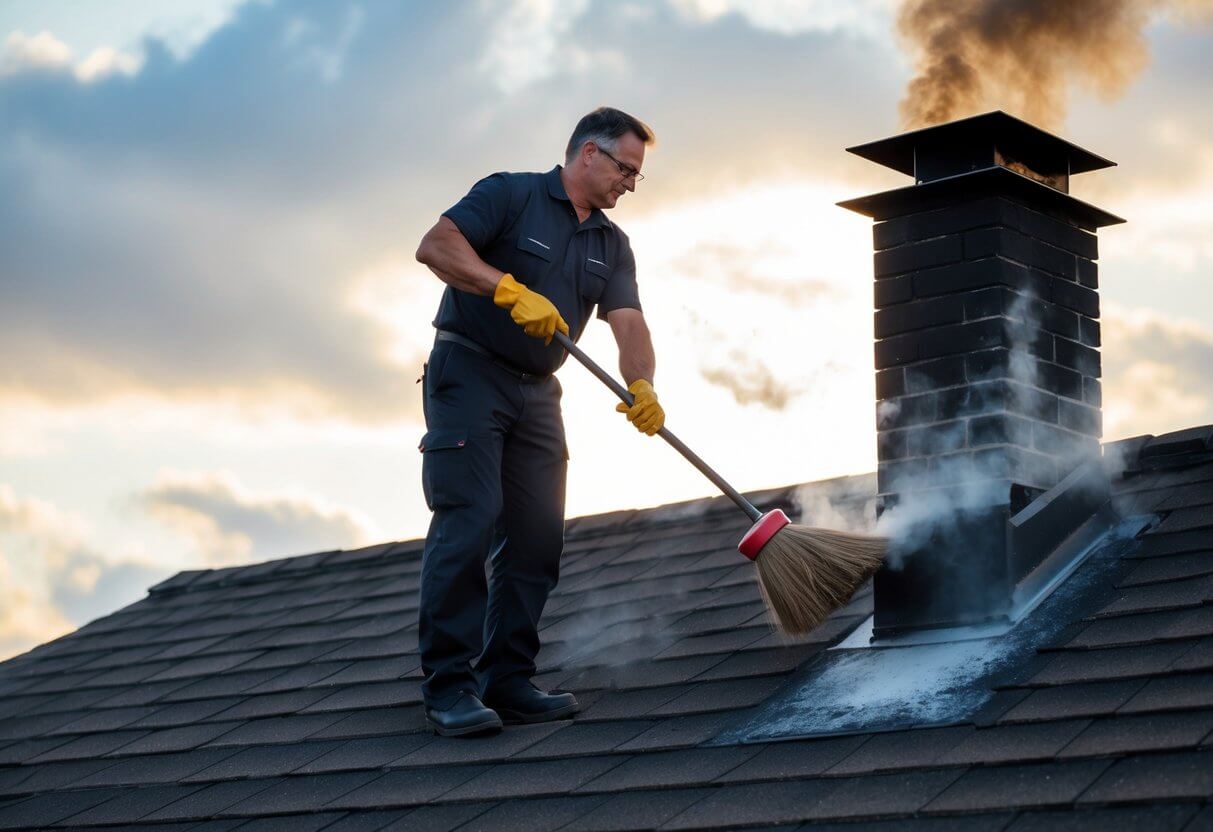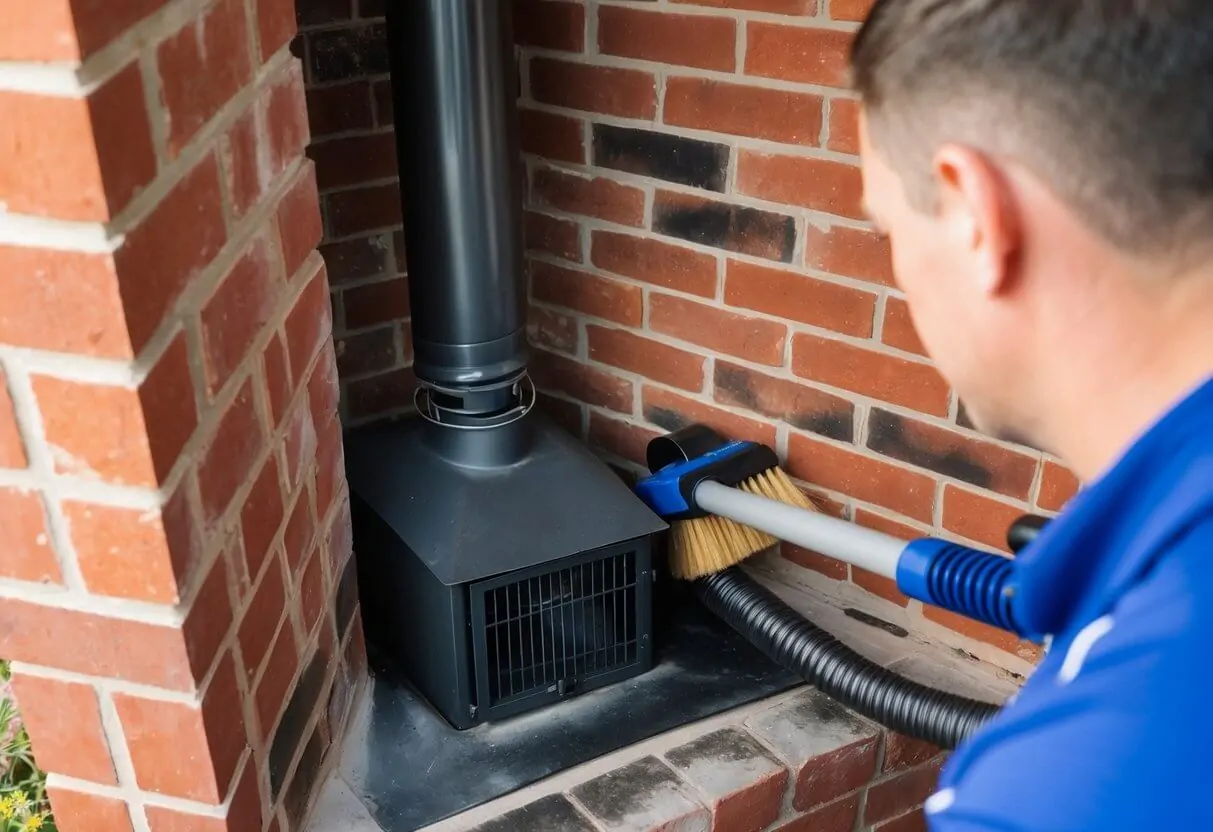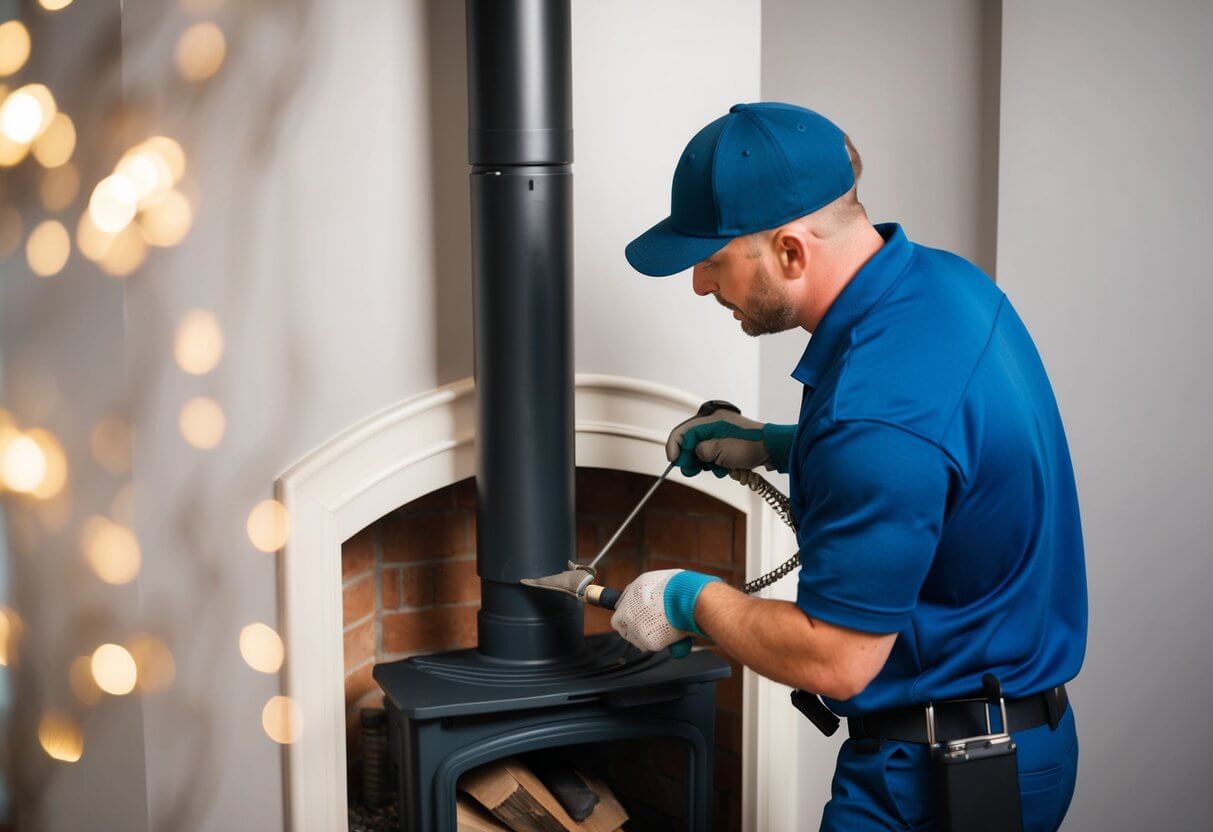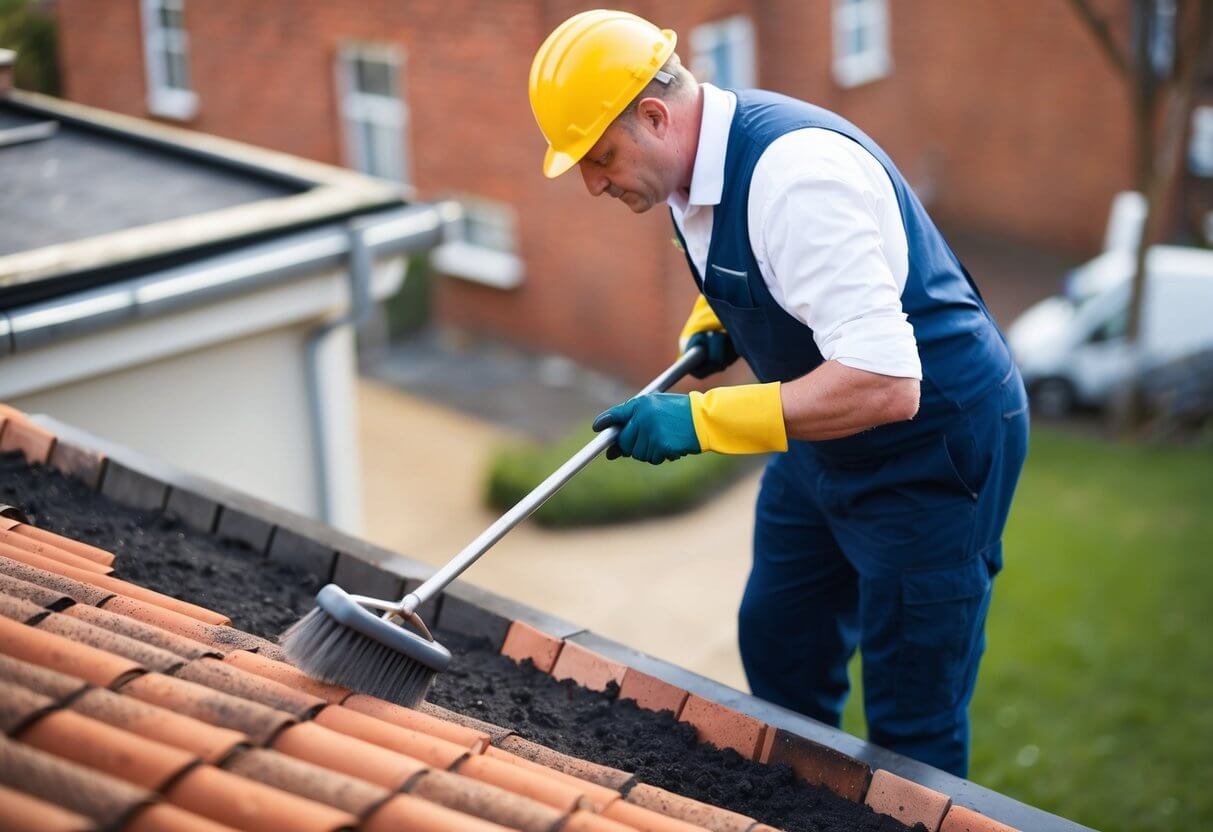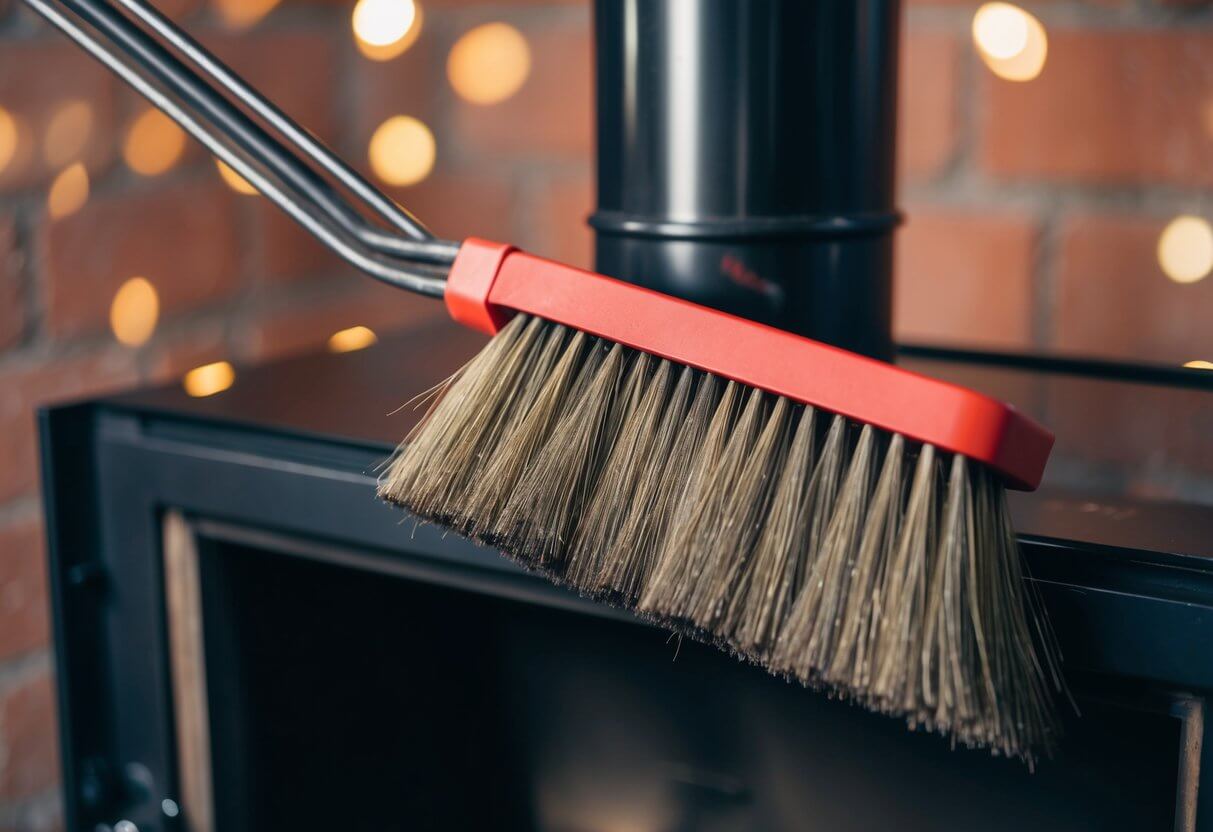Introduction
Chimney sweeping is an essential maintenance task that ensures the safety and functionality of a home’s chimney system. Regular sweeps help prevent dangerous conditions like chimney fires and carbon monoxide buildup, making this process vital for every homeowner. Understanding the chimney sweeping process can empower individuals to take proactive measures in maintaining their homes, ensuring both safety and efficiency.
The process involves several steps, starting with a thorough inspection to assess the condition of the chimney. A chimney sweep will scrutinize both the exterior and interior for any signs of blockages, damage, or creosote buildup. Once the assessment is complete, the actual sweeping can begin, which involves specialized brushes and tools designed to dislodge soot and debris effectively.
For homeowners looking to enhance the longevity and safety of their chimneys, knowing what to expect during a chimney cleaning will go a long way. The sweeping process, when done correctly, results in a cleaner, safer chimney and ultimately a more secure home environment.
Key Takeaways
- Regular chimney sweeps prevent hazards like fires and carbon monoxide buildup.
- A thorough inspection is essential before the actual cleaning begins.
- Proper maintenance enhances the overall safety and efficiency of the chimney system.
The Importance of Chimney Sweeping
Chimney sweeping plays a critical role in maintaining safety and efficiency in homes with fireplaces or wood stoves. Regular cleaning prevents hazards and contributes to better indoor air quality by addressing common issues such as creosote buildup and soot accumulation.
Preventing Chimney Fires
Chimney fires can pose significant risks to home safety. They often occur when creosote, a combustible byproduct of burning wood, builds up within the chimney. If left unaddressed, this buildup can ignite, leading to dangerous and destructive fires.
To mitigate this risk, homeowners should schedule regular chimney sweeps. Professional sweeps thoroughly clean the chimney, significantly reducing the chance of flare-ups. Keeping the chimney clear of debris and obstructions not only safeguards the home but also enhances the reliability of the heating system.
Reducing Creosote Buildup
Creosote buildup is a natural consequence of burning wood, especially if the wood is not well-seasoned. This substance can accumulate on the inner walls of the chimney, leading to thick layers that increase fire hazards.
Regular chimney sweeping is essential in managing creosote. A chimney sweep utilizes specialized brushes and tools to effectively remove deposits. This process not only minimizes fire risk but also extends the lifespan of the chimney and associated heating appliances.
Improving Indoor Air Quality
Indoor air quality can deteriorate due to insufficient chimney maintenance. Soot and creosote particles can escape into living spaces, leading to respiratory issues and other health concerns. When a chimney is clean, it allows for proper ventilation, reducing the likelihood of carbon monoxide leaks.
A clean chimney promotes safer combustion within heating appliances, ensuring that harmful gases exit the home effectively. Regular chimney sweeping not only enhances safety but also contributes to a healthier living environment by maintaining optimal air quality.
Understanding Your Chimney Structure
A comprehensive knowledge of chimney structure is essential for effective maintenance and safety. Key components, including the chimney flue and smoke chamber, play significant roles in how a chimney functions. Awareness of common chimney problems can aid in early detection and prevention.
Anatomy of a Chimney
A chimney comprises several parts, each designed for specific functions. The crown is the top covering that protects the chimney from water damage. Beneath it, the chimney cap acts as a barrier, preventing animals and debris from entering.
The flue is a vital component, allowing smoke and gases to escape. It is typically lined with materials like tile or metal to maintain structural integrity and efficiency. The smoke chamber, located just above the firebox, helps funnel smoke into the flue. Proper maintenance of these components is necessary for optimal chimney performance.
The Role of the Chimney Flue
The chimney flue is crucial for venting smoke and gases produced by combustion. Properly sized and maintained flues ensure that these byproducts exit the home safely. A flue that is too narrow can lead to draft issues, while one that is too wide may result in insufficient heat to carry smoke out.
Flues can be masonry or metal lined, with each material offering different benefits. The lining protects the chimney structure and enhances safety by reducing creosote buildup. Regular inspections for cracks or blockages in the flue are necessary to prevent hazardous situations.
Common Chimney Problems
Chimneys can face various issues that affect their functionality. Cracks in the flue or crown can allow moisture and gases to enter the structure, leading to potential damage. Creosote buildup is a common problem, often resulting from incomplete combustion. It can ignite, causing fires that may spread through the chimney.
Another issue is the obstruction from animals or debris entering the flue, blocking smoke from escaping. Regular sweeping and inspections can help identify and address these problems early. Keeping the chimney clear ensures that it functions effectively and safely.
Inspection and Assessment
The inspection and assessment phase is crucial in the chimney sweeping process. This stage identifies potential issues and determines the overall condition of the chimney.
Professional Chimney Inspection
A professional chimney sweep conducts a detailed examination following guidelines set by relevant standards, such as the National Fire Protection Association (NFPA). During this inspection, the sweep assesses both the interior and exterior components of the chimney.
Key aspects of the inspection include:
- Flue Condition: They check for blockages, creosote buildup, and any obstructions that may impede airflow.
- Structural Integrity: Evaluating the masonry for cracks or deterioration is essential.
- Safety Compliance: Ensuring the chimney meets local building codes is vital for safe operation.
The findings are typically documented in a chimney report, which outlines any necessary repairs or maintenance.
Visual Inspection Techniques
Visual inspection techniques play a significant role in identifying visible defects that could affect chimney performance. The chimney sweep utilizes various methods to assess the structure effectively.
- Exterior Assessment: Inspecting the chimney crown, flashing, and exterior bricks for signs of wear or damage.
- Camera Inspection: In some cases, a specialized camera may be used to observe hard-to-reach areas within the flue.
- Physical Inspection Tools: Tools such as probes and mirrors assist in examining the chimney thoroughly.
Visual inspections are often supplemented by more advanced methods if problems are detected or suspected. These inspections help maintain safety and efficiency in chimney operation.
The Sweeping Process
The chimney sweeping process involves careful preparation, the right tools, and effective cleaning techniques. Each step is essential to ensure a thorough job, enhancing both safety and efficiency.
Preparing the Area
Before beginning the chimney sweeping process, it’s crucial to prepare the area adequately. The professional sweep should lay down drop cloths or tarps to protect the surrounding flooring and furniture from soot and debris.
Furthermore, covering vents and other openings can minimize dust distribution throughout the home.
They will also inspect the chimney for any pre-existing issues such as cracks or blockages. This initial assessment helps in creating a tailored approach for cleaning based on the chimney’s condition.
The Tools of the Trade
Various tools are utilized for effective chimney cleaning. The chimney brush is the most critical tool, designed to dislodge soot and creosote buildup.
Different sizes and types of brushes are available, accommodating various chimney flue dimensions.
An industrial vacuum is also essential. It captures harmful particles released during the sweeping process, keeping the workspace clean and safe.
Other helpful tools may include a flashlight for inspecting dark spaces, extension rods for reaching taller flues, and a bucket for collecting debris.
Cleaning Techniques
Effective chimney cleaning involves specific techniques. The professional sweep typically starts by inserting the chimney brush into the flue from the top or bottom, depending on accessibility.
They move the brush up and down while applying sufficient pressure to break up any built-up soot and creosote.
Using the vacuum simultaneously helps capture falling debris, ensuring a clean finish.
After brushing, a thorough inspection follows to check for any remaining residue and to evaluate the condition of the chimney. This dual approach ensures that the chimney is not only clean but also safe for continued use.
After the Sweep
Post-sweeping procedures are vital for ensuring the longevity and safety of a chimney system. Proper evaluation and ongoing maintenance are essential for a clear understanding of the chimney’s condition.
Evaluating the Cleanliness
Once the sweeping is complete, it is important to assess the effectiveness of the cleaning. The Chimney Safety Institute of America (CSIA) recommends inspecting the flue and smoke chamber for remaining soot or debris. Using a flashlight can help identify any overlooked areas.
Homeowners should also verify that the chimney cap is unobstructed, as this can affect airflow. A professional might suggest a follow-up inspection if any issues are detected. According to the National Fire Protection Association (NFPA), ensuring a clean chimney reduces the risk of chimney fires significantly, making this evaluation crucial.
Regular assessments after every sweep can prevent potential dangers and contribute to safer fireplace operation.
Maintenance and Recommendations
Routine maintenance plays a significant role in chimney safety. The CSIA advises scheduling inspections at least once a year, particularly if the chimney is used frequently. This recommendation aligns with the NFPA’s guidelines for preventing flammable build-up.
Homeowners should become familiar with signs of trouble, such as unusual smells or smoke flow issues. Keeping the fireplace area clean and not storing combustibles nearby further enhances safety.
Additionally, utilizing a quality chimney cap is essential for keeping debris and animals out. Regularly checking for cracks or other damage ensures long-lasting performance. It is advisable to consult with professionals for any needed repairs and to maintain optimal chimney health.
Frequently Asked Questions
This section addresses common inquiries regarding chimney sweeping. It covers the necessary tools, safety precautions, and indicators that necessitate a sweep, as well as the cleaning methods and recommended frequency for this important maintenance task.
What are the necessary tools for chimney sweeping?
A basic chimney sweeping kit typically includes a wire brush, extension rods, and a vacuum system. The wire brush dislodges soot and creosote buildup, while the extension rods allow the brush to reach the entire flue. A vacuum system helps contain debris during the cleaning process.
How is a professional chimney cleaning process conducted?
Professionals begin by inspecting the chimney for blockages and damage. They use a vacuum to minimize dust and then attach a brush head to a rod system that is pushed up the flue. Sweeping motion clears debris, and the vacuum collects any falling soot and ash.
What safety precautions should be taken during chimney sweeping?
Chimney sweeps should wear protective gear, including gloves and a dust mask, to minimize inhalation of harmful particles. They should also ensure good ventilation and have a fire extinguisher nearby. Additionally, using stable ladders and scaffolding is essential when accessing higher chimneys.
What are the signs that indicate the need for a chimney sweep?
Indicators for a chimney sweep can include a strong, lingering odor of creosote, visible soot buildup, or difficulty in lighting fires. Increased smoke in the living space when burning wood may also suggest a blockage in the flue. Regular inspections can help identify these issues early.
How often should chimney sweeping be performed?
Regular chimney inspection is essential, with recommendations suggesting an annual check regardless of usage. For frequent users, especially those burning wood, more frequent cleanings may be necessary. Following local building codes and guidelines can also determine specific needs.
What methods are used to ensure the thoroughness of a chimney sweep?
Thorough chimney sweeping involves multiple methods, including mechanical brushing and vacuum collection systems. Inspecting the chimney with a flashlight after sweeping ensures all debris is removed. Some professionals may also use cameras to inspect for hidden blockages and assess the condition of the flue effectively.

